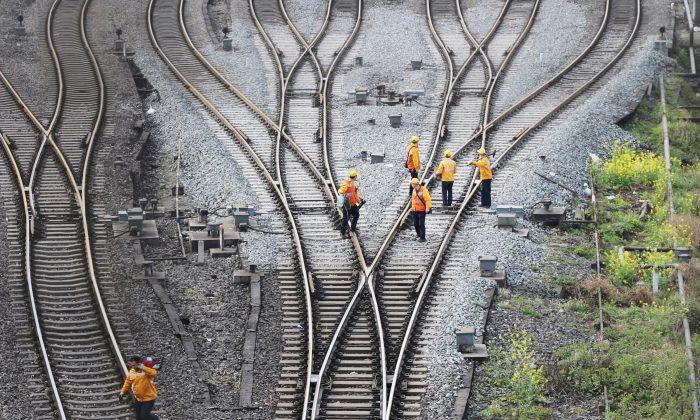News Analysis
DHL’s
Global Trade Barometer that tracks three quarters of world air and shipping trade reported its China index has been cut in half since President Trump took office in 2017.
CEO of DHL Global Freight Tim Scharwath issued a press release that the trend in world trade for September through November predicts some contraction in the next three months, but “China shows weakest growth outlook of all surveyed countries.”
With a Global Trade Barometer (GTB) index score for the next 90 days above 50 indicating positive growth and below 50 indicating declines, the GTB index contracted by -2 points in November to an
index value of 45. DHL forecasts global trade to continue to “mildly” lose momentum, as score for “air trade declined by -3 to 42 points, and containerized ocean trade by -2 to 46 index points.”
The Global Trade Barometer for China peaked at a tremendous GTB growth momentum score of
80 in January 2017, just as Donald Trump was being sworn in as the 45
th President of the United States. But China’s GTB outlook score has fallen in 30 of the last 34 months to hit a new trend low of 42 in November, led by a -2 point drop for air freight, and a -4 point plunge for China’s ocean shipping outlook.
The value for Chinese imports and exports of goods has
expanded since 1995 from $280.9 billion or 3 percent of world trade, to $4.1 trillion or 12.4 percent of world trade in 2017. China’s trade surplus in goods trade during the period grew from $17 billion to $420 billion, led by its U.S. goods surplus that spiked from $9 billion to $280 billion.
China relentlessly led the seven major global trading nations that dominate the DHL Global Trade Barometer as growth leader for the two decades of its economic boom. But the world’s largest manufacturing and export driven economy now trails India with a score of 54; the United Kingdom with a score of 49; Germany with a score of 45; the United States with a score of 44; and South Korea with a score of 43.
The latest Chinese GTB outlook
found “export of consumer fashion goods are spiraling down from moderate growth to deflation;” while high technology, personal and household goods, machinery parts and industrial raw materials “remain lackluster.” DHL predicts imports of basic raw materials and chemicals and to remain positive, but imports of climate controlled goods and machinery parts are “abating into contraction.” The worst performing Chinese GTB sector score is capital equipment and machinery, which fell from 98 in March 2018 at the start of the Sino-U.S. trade war, to 28 currently.
DHL, as one of the world’s top ten logistics companies, published its latest “Global Connectedness Index (GCI)” in December that highlights key developments in international flows of capital, trade, information, and people.
The new report
states: “Trade flows continued to intensify through the early stages of the U.S.-China trade war in 2018. In the first half of 2019, however, the share of global output traded across national borders fell, and current forecasts call for full-year declines in 2019 and 2020.”
Chriss Street is an expert in macroeconomics, technology, and national security. He has served as CEO of several companies and is an active writer with more than 1,500 publications. He also regularly provides strategy lectures to graduate students at top Southern California universities.





